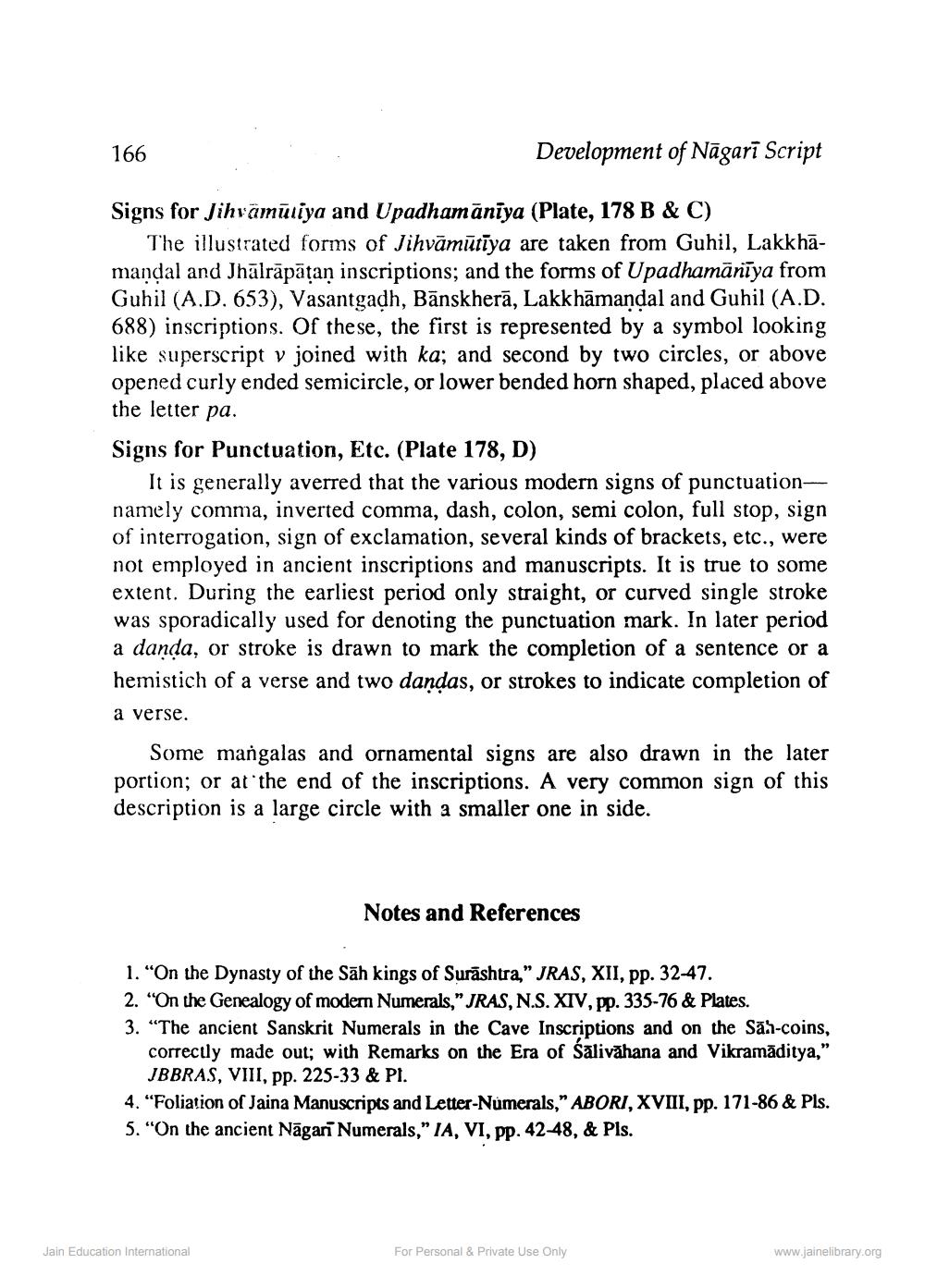________________
166
Development of Nāgarī Script
Signs for Jihvamūriya and Upadhamānīya (Plate, 178 B & C)
The illustrated forms of Jihvāmūtīya are taken from Guhil, Lakkhāmandal and Jhālrāpātan inscriptions; and the forms of Upadhamānīya from Guhil (A.D. 653), Vasantgadh, Banskherā, Lakkhāmandal and Guhil (A.D. 688) inscriptions. Of these, the first is represented by a symbol looking like superscript y joined with ka; and second by two circles, or above opened curly ended semicircle, or lower bended horn shaped, placed above the letter pa. Signs for Punctuation, Etc. (Plate 178, D)
It is generally averred that the various modern signs of punctuationnamely comma, inverted comma, dash, colon, semi colon, full stop, sign of interrogation, sign of exclamation, several kinds of brackets, etc., were not employed in ancient inscriptions and manuscripts. It is true to some extent. During the earliest period only straight, or curved single stroke was sporadically used for denoting the punctuation mark. In later period a danda, or stroke is drawn to mark the completion of a sentence or a hemistich of a verse and two dandas, or strokes to indicate completion of a verse.
Some mangalas and ornamental signs are also drawn in the later portion; or at the end of the inscriptions. A very common sign of this description is a large circle with a smaller one in side.
Notes and References
1. "On the Dynasty of the Sāh kings of Surāshtra," JRAS, XII, pp. 32-47. 2. "On the Genealogy of modern Numerals," JRAS, N.S. XIV, pp. 335-76 & Plates. 3. "The ancient Sanskrit Numerals in the Cave Inscriptions and on the Sah-coins,
correctly made out; with Remarks on the Era of salivāhana and Vikramāditya,"
JBBRAS, VIII, pp. 225-33 & Pl. 4. “Foliation of Jaina Manuscripts and Letter-Numerals,” ABORI, XVIII, pp. 171-86 & Pls. 5. "On the ancient Nāgari Numerals," IA, VI, pp. 42-48, & Pls.
Jain Education International
For Personal & Private Use Only
www.jainelibrary.org




